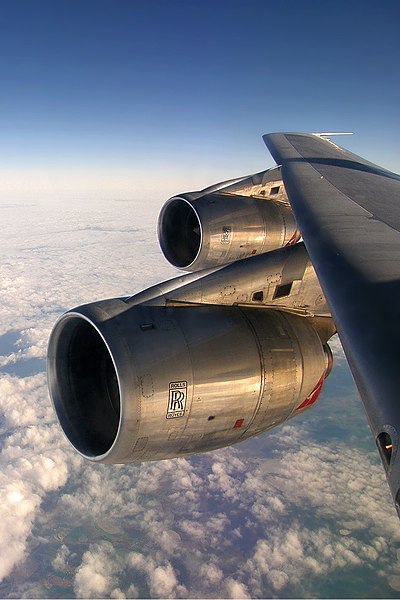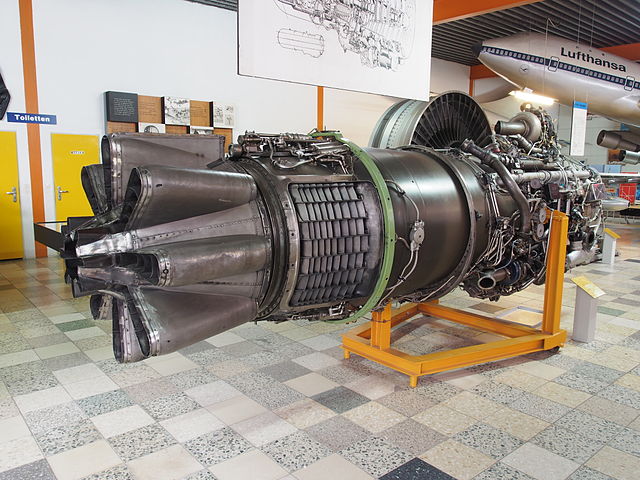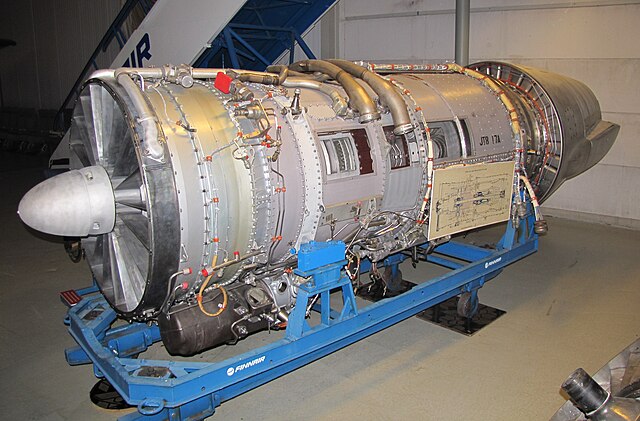The Rolls-Royce RB211 is a British family of high-bypass turbofan engines made by Rolls-Royce. The engines are capable of generating 41,030 to 59,450 lbf of thrust. The RB211 engine was the first production three-spool engine and turned Rolls-Royce from a significant player in the aero-engine industry into a global leader.
Rolls-Royce RB211
Lockheed L-1011 TriStar rear nozzle
RB211-524 on a Qantas Boeing 747-300
maintenance of a RB211-535 on an American Airlines Boeing 757
A turbofan or fanjet is a type of airbreathing jet engine that is widely used in aircraft propulsion. The word "turbofan" is a combination of the preceding generation engine technology of the turbojet, and a reference to the additional fan stage added. It consists of a gas turbine engine which achieves mechanical energy from combustion, and a ducted fan that uses the mechanical energy from the gas turbine to force air rearwards. Thus, whereas all the air taken in by a turbojet passes through the combustion chamber and turbines, in a turbofan some of that air bypasses these components. A turbofan thus can be thought of as a turbojet being used to drive a ducted fan, with both of these contributing to the thrust.
Chevrons on an Air India Boeing 787 GE GEnx engine
Rolls-Royce Conway low-bypass turbofan from a Boeing 707. The bypass air exits from the fins, while the exhaust from the core exits from the central nozzle. This fluted jetpipe design is a noise-reducing method devised by Frederick Greatorex at Rolls-Royce
General Electric GEnx-2B turbofan engine as used on a Boeing 747–8. View into the bypass duct looking forward from the bypass nozzle and showing fan exit stators/fan blades
The widely produced Pratt & Whitney JT8D used on many early narrowbody jetliners. The fan is located behind the inlet guide vanes.








